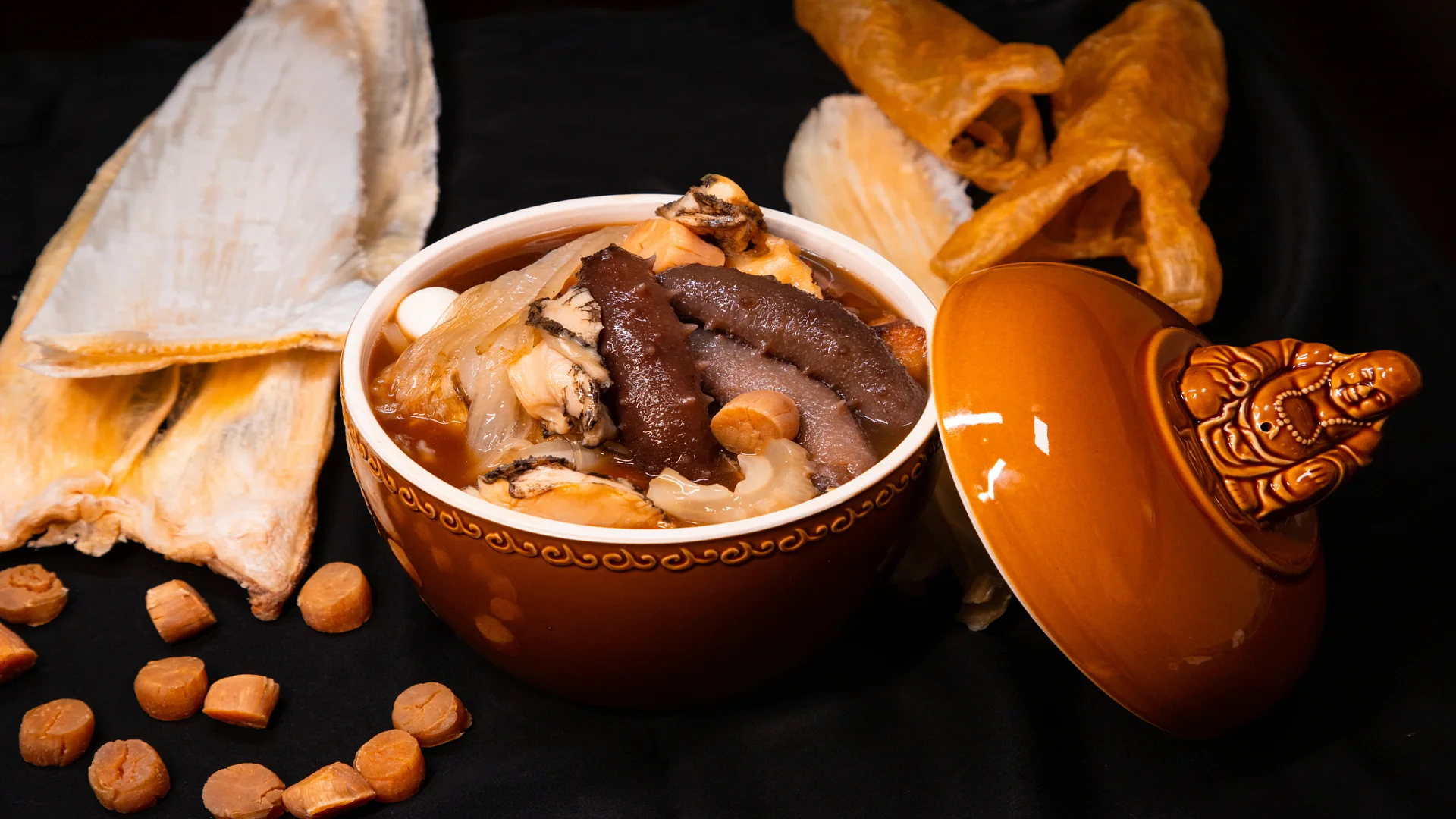A Culinary Journey into the Heart of Fujian: The Exquisite Delicacy of Buddha Jumps Over the Wall
Introduction:
As a culinary professional, I am often captivated by the stories and flavors that define regional cuisines. One such dish that has captured the imagination of food enthusiasts worldwide is the “Buddha Jumps Over the Wall” (Fotiaoqiang), a dish that stands as the “scholar” of Fujian cuisine. This dish is not just a meal; it is a testament to the rich culinary heritage of Fuzhou, the capital of Fujian Province in China. Let’s delve into the origins, cultural significance, and the meticulous art of creating this iconic dish.
Origins and Cultural Background:
The legend of Buddha Jumps Over the Wall dates back to the Qing Dynasty, when a monk, overwhelmed by the aroma of a simmering stew, was said to have jumped over the temple wall to partake in the meal. This dish is a symbol of Fuzhou’s culinary expertise and is often served during special occasions such as weddings and banquets, reflecting the region’s tradition of hospitality and the desire to impress guests with the finest ingredients.
Ingredients and Preparation:
Buddha Jumps Over the Wall is a labor of love, requiring a symphony of ingredients that include abalone, sea cucumber, shark’s fin, and a variety of other luxurious seafood and meats. The dish is a testament to the patience and skill of the chef, as it involves hours of meticulous preparation and slow-cooking to bring out the depth of flavors.
The process begins with the careful selection of each ingredient. The abalone must be tender and succulent, the sea cucumber firm yet yielding, and the shark’s fin delicate. Each ingredient is prepared separately, often through a process of boiling, blanching, or steaming, before they are combined in a clay pot with a rich broth made from chicken, pork, and ham.
The broth itself is a masterpiece, simmered for hours to concentrate the flavors and create a velvety texture. The slow cooking process allows the ingredients to meld together, each contributing its unique flavor and texture to the overall dish.
Taste and Texture:
The taste of Buddha Jumps Over the Wall is a complex interplay of savory, sweet, and umami notes. The rich broth is the foundation, with its deep, intense flavor that coats the palate. The abalone and sea cucumber provide a succulent, slightly chewy texture, while the shark’s fin adds a delicate, silky element to the dish.
Visual Description:
When presented, Buddha Jumps Over the Wall is a feast for the eyes as much as it is for the palate. The dish is often served in a traditional clay pot, with the ingredients artfully arranged to showcase their variety and quality. The vibrant colors of the abalone, the dark, rich hues of the sea cucumber, and the wispy strands of shark’s fin all contribute to a visually stunning dish that is as inviting as it is luxurious.
Representative Dishes and Culinary Characteristics:
Buddha Jumps Over the Wall is a standalone dish that stands on its own merits, but its rich broth can also be used as a base for other Fujian specialties. The broth can be ladled over rice or noodles, transforming a simple meal into a luxurious experience. The dish itself is a celebration of the best that Fujian cuisine has to offer, with its focus on quality ingredients, complex flavors, and the art of slow cooking.
In conclusion, Buddha Jumps Over the Wall is more than just a dish; it is a culinary journey through the heart of Fujian, a region known for its rich seafood and the art of creating dishes that are as beautiful as they are delicious. As a food professional, I am always in awe of the dedication and skill that goes into creating this iconic dish, and I encourage anyone with a love for fine cuisine to experience the depth and richness of Buddha Jumps Over the Wall.
